
Grotte de Brando
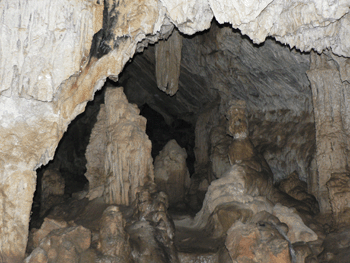 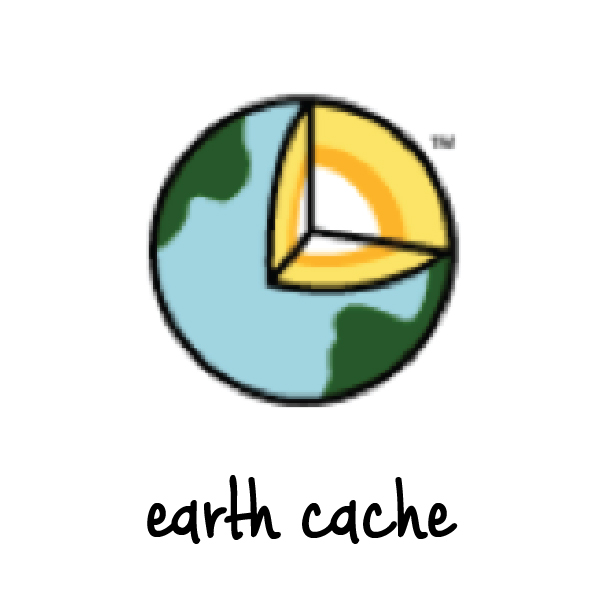 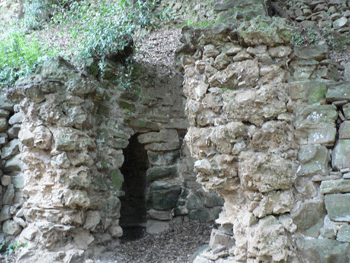
 The grotte de Brando The grotte de Brando
was discovered by the commander Philippe Ferdinandi, during building works that he carried out on his property, in 1841.
The caves were also exploited commercially until the beginning of the First World War.
It may be the old mouth of the stream, which now emerges from the rock a few meters below and whose water is used in the ice factory, "les glacières de Brando".
The cave of Brando is also an ancient fortified village, on several levels, one can see a chapel and various other constructions. The cave is about 30 meters deep and can be seen many different concretions called Speleothems.
Speleothems:
A speleothem (in greek, "cave deposit"), is a secondary mineral deposit formed in a cave as a result of dissolution of limestone or dolomite.
Among the most common forms are are:
Stalactites (A), soda straws (B), stalagmites (C), Columns (E), drapes (G) and some others as per image here below:
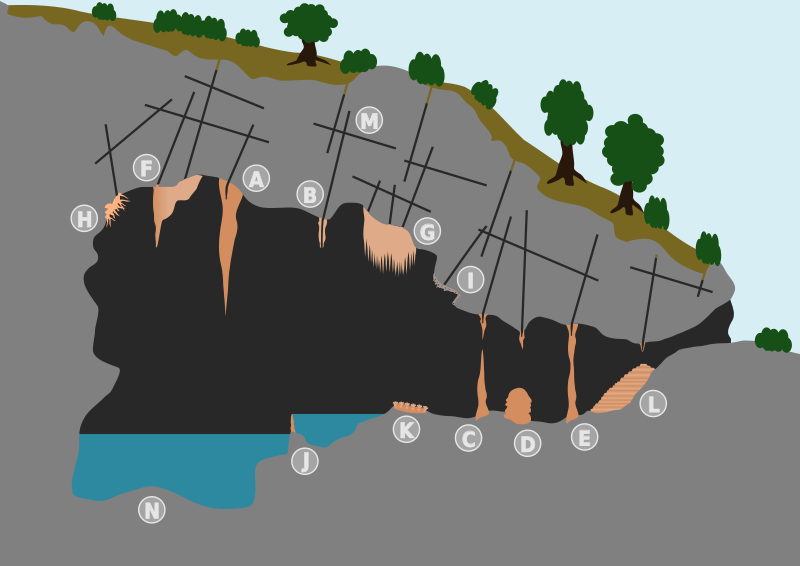 (source image: wikipedia)
(source image: wikipedia)
Origin and composition:
The water that seeps inside, through the cracks of the rock,can dissolve some compounds such as calcite and aragonite (both mineral forms of calcium carbonate), or gypsum (calcium sulphate). The speed of the process depends on the amount of carbon dioxide in solution, internal temperature, and other factors. When the solution reaches the air of the cave, a release of carbon dioxide contained in it may alter the ability of water to keep these minerals in solution, causing the precipitation of solutes. Over time, also tens of thousands of years, the accumulation of these precipitates can give shape to the speleothems.
Their development is very slow. The exact speed of growth varies depending on several factors such as for example: The concentration of lime in the water, the content of CO2 in the water and in the cave, the amount of water that drips, temperature, humidity, pressure and fauna in cave.
Any alteration of one of these factors can disturb the growth. Not to mention the effect of any visitors to the cave: If you touch a stalactite or stalagmite, the residual fat of human skin, prevents future deposit limestone in this specific point.
Here are the questions 1-4 to which you are kindly asked to answer this to log this earthcache:
1) Outside of the cave:
a) Describe the colour and surface of the rocks above and around the entrance.
b) Why do you think did the cave develop right here ?
2) Get inside the cave and climb the stairs.
Observe the walls, colour and serface while getting up and once you arrive on top.
Compare the two different colours of the wall. What's the reason?
3) 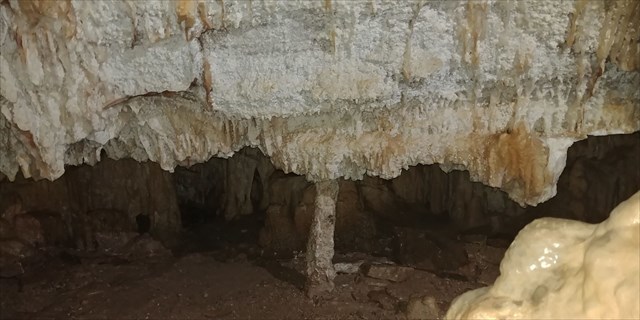 When you climb the stairs and reach the top, down in front of you, you'll see this speleothem: When you climb the stairs and reach the top, down in front of you, you'll see this speleothem:
a) Try to explain briefly what kind of speleothem this is and its origins, how it was been created.
b) Estimate it's height. Giving the assumption that during the creation such a speleothem grows about 10 millimeters every 100 years per year, which is a fairly realistic data, how long did it approximately take to reach today's height?
Hint: do not try to answer this from home. Without scaling on site it's impossible to answer!
(source picture: self-made)
4) Please take a picture of yourself or anything else that you particularly liked and attach it to your log .
Please send the answers to:
Earthcache@CaniSciolti.org
Feel free to log the cache as found and send us your proposed answers either E-mail, our profile, or the geocaching.com message center without waiting for our response and we'll will contact you in case of problems.
The questions do not refer to an information panel located on site or something similar but are to be addressed with your own reasoning. This is why we have tried to keep them as easy as possible.
Thank you for your attention and enjoy the discovery of this fantastic naturalistic spot!
 La grotte de Brando La grotte de Brando
a été découverte par le commandant de génie Philippe Ferdinandi, lors de travaux qu’il effectuait sur sa propriété, en 1841. Ce dernier faisait visiter ces grottes à ses hôtes. Les grottes ont également été exploitées commercialement jusqu’au début de la première guerre mondiale.
Il peut s'agir de l'ancienne embouchure du ruisseau, qui émerge aujourd'hui quelques mètres plus et dont l'eau est utilisée dans la fabrique de glace, "les glacières de Brando".
Les grottes de Brando, c'est aussi un ancien village fortifié, sur plusieurs niveaux, on peut y voir une chapelle et diverses constructions.
La grotte est profonde d'une trentaine de mètres et on peut y voir des concrétions en forme de stalactites, des Spéléothèmes.
Spéléothème:
Un spéléothème (en grec, "gisement de caverne"), est un dépôt minéral secondaire formé dans une grotte à la suite de la dissolution du calcaire ou de la dolomite.
Les formes les plus courantes sont: stalactites (A), fistuleuses (B), stalagmites (C), colonnes (E), draperie (G) et quelques autres selon l'image ci-dessous:
 (source image: wikipedia)
(source image: wikipedia)
Origine et composition:
L'eau qui s'infiltre à l'intérieur, à travers les fissures de la roche, peut dissoudre certains composés tels que la calcite et l'aragonite (deux formes minérales de carbonate de calcium) ou le gypse (sulfate de calcium). La vitesse du processus dépend de la quantité de dioxyde de carbone dans la solution, de la température interne et d'autres facteurs. Lorsque la solution atteint l’air de la grotte, un dégagement de dioxyde de carbone peut altérer la capacité de l’eau à maintenir ces minéraux en solution, entraînant la précipitation des solutés. Au fil du temps, voire des dizaines de milliers d'années, l'accumulation de ces précipités peut donner forme aux spéléothèmes.
Leur développement est très lent. La vitesse exacte de croissance varie en fonction de plusieurs facteurs, comme par exemple: la concentration de chaux dans l'eau, la teneur en CO2 dans l'eau et dans la grotte, la quantité d'eau qui coule, la température, l'humidité, la pression et la faune. la grotte.
Toute modification de l'un de ces facteurs peut perturber la croissance. Sans parler de l'effet des visiteurs de la grotte: si vous touchez une stalactite ou une stalagmite, la graisse résiduelle de la peau humaine empêche tout dépôt de calcaire dans ce point précis.
S'il vous plaît répondre aux questions 1 - 5 pour loguer cette Earthcache:
1) En dehors de la grotte:
a) Décris la couleur et la surface des roches au-dessus et autour de l'entrée.
b) Selon vous, pourquoi la grotte s'est-elle développée ici ?
2) Entrez dans la grotte et montez les escaliers.
Observez les murs, la couleur et la surface pendant que vous vous levez et une fois sur le dessus.
Comparez les deux couleurs de le mur. Quelle est la raison ?
3)  Lorsque vous montez les escaliers et atteignez le sommet, en bas devant vous, vous verrez ce spéléothème: Lorsque vous montez les escaliers et atteignez le sommet, en bas devant vous, vous verrez ce spéléothème:
a) Essayez d’expliquer brièvement quel type de spéléothème et ses origines, comment il a été créé.
b) Estimer sa hauteur. En supposant que pendant la création, un tel spéléothème croît d'environ 10 millimètres mm par 100 années, ce qui est une donnée assez réaliste, combien de temps a-t-il fallu pour atteindre la taille actuelle?
Astuce: n'essayez pas de répondre à cela depuis chez vous. Sans mise à l'échelle sur le site, il est impossible de répondre.
(image source: self-made)
4) Prenez une photo de vous-même ou de toute autre chose que vous avez particulièrement appréciée et joignez-la à votre log.
Veuillez envoyer vos réponses à:
Earthcache@CaniSciolti.org
N'hésitez pas à vous connecter au cache tel que trouvé et à nous envoyer vos réponses proposées par E-mail, notre profil ou le centre de messagerie geocaching.com sans attendre notre réponse et nous vous contacterons en cas de problème.
Les questions ne font pas référence à un panneau d'information situé sur le site ou à quelque chose de similaire, mais doivent être traitées avec leur propre raisonnement. C'est pourquoi nous avons essayé de les garder aussi faciles que possible.
Merci de votre attention et de la découverte de ce site naturel fantastique!
 La grotta di Brando La grotta di Brando
fu scoperta nel 1841 dal comandante Philippe Ferdinandi, durante i lavori che svolse nella sua proprietà. Le caverne furono anche sfruttate commercialmente fino all'inizio della prima guerra mondiale. Potrebbe essere la vecchia bocca del torrente, che ora emerge dalla roccia pochi metri più in basso e la cui acqua è utilizzata nella sottostante fabbrica di ghiaccio "les glacières de Brando".
La grotta di Brando è anche un antico borgo fortificato, su più livelli si trovano trovare una cappella e varie altre costruzioni. La grotta è profonda circa 30 metri e si possono osservare molte diverse concrezioni chiamate speleotemi vari.
Speleotemi:
Uno speleotema (in greco, "deposito in grotta"), è un deposito minerale secondario formatosi in una caverna a seguito di dissoluzione di calcare o dolomia.
Tra le forme più diffusi ci sono:
Stalattiti (A), Cannule (B), Stalagmiti (C), Colonne (E), Drappeggi (G) e tanti altri che sono visibili nell'immagine qui sotto:

(fonte immagine: wikipedia)
Origine e composizione:
L'acqua che trapela all'interno, attraverso le fessure della roccia, può dissolvere alcuni composti quali la calcite e l'aragonite (entrambi forme mineralogiche del carbonato di calcio), od il gesso (solfato di calcio). La velocità del processo dipende dalla quantità di anidride carbonica in soluzione, dalla temperatura, nonché da altri fattori. Quando la soluzione raggiunge l'aria della grotta, un rilascio di anidride carbonica contenuta in essa può alterare la capacità dell'acqua di mantenere in soluzione tali minerali, causando la precipitazione dei soluti. Con il tempo, anche decine di migliaia di anni, l'accumulazione di questi precipitati può dare forma agli speleotemi.
Il loro sviluppo è molto lento. L'esatta velocità della crescita varia in base a diversi fattori come per esempio: La concentrazione di calce nell'acqua, il contenuto di CO2 nell'acqua e nella grotta, la quantità di acqua che gocciola, temperatura, umidità, pressione e fauna nella grotta.
Qualsiasi alterazione di uno di questi fattori può disturbare la crescita. Per non parlare dell'effetto di eventuali visitatori della grotta: Se si tocca una stalattite o stalagmite, il residuo di grasso della pelle umana, previene il futuro deposito calcare in questo specifico punto.
Ecco i quesiti 1-4 a quali siete pregati di rispondere per loggare questo earthcache:
1) Al di fuori della grotta:
a) Descrivi il colore e la superficie delle rocce sopra e attorno all'ingresso.
b) Perché pensi che la grotta si sia sviluppata proprio qui?
2) Entra nella caverna e sali le scale.
Osserva i muri, i colori da quando inizi a salire fino una volta arrivato in cima.
Confronta i due diversi colori del muro. Qual è il motivo?
3)  Quando sali le scale e raggiungi la cima, di fronte a te, vedrai questo speleotema: Quando sali le scale e raggiungi la cima, di fronte a te, vedrai questo speleotema:
a) Prova a spiegare brevemente che tipo di speleotema si tratta e le sue origini, come è stato creato.
b) Stima la sua altezza. Partendo dal presupposto che durante la creazione un tale speleotema cresca di circa 10 millimetri in 100 anni, che è un dato abbastanza realistico, quanto tempo è stato impiegato approssimativamente per raggiungere l'altezza di oggi?
Suggerimento: non provare a rispondere da casa. Senza avere riferimenti in non è impossibile rispondere!
(fonte immagine: self-made)
4) Scatta una foto di te, il gps o di qualsiasi altra cosa che ti è particolarmente piaciuta e allegala al tuo log .
Invia le tue risposte a:
Earthcache@CaniSciolti.org
Sentiti libero di registrare la cache come trovata e di inviarci le tue risposte proposte via e-mail, il nostro profilo o il centro messaggi di geocaching.com senza attendere la nostra risposta e ti contatteremo in caso di problemi.
Le domande non fanno riferimento ad un pannello informativo posto in loco o qualcosa di simile.
Grazie per l'attenzione e buon divertimento alla scoperta di questo luogo naturalistico a dir poco fantastico!
 La grotte de Brando - Die Brando Höhle La grotte de Brando - Die Brando Höhle
wurde von dem Kommandeur Philippe Ferdinandi während der Arbeiten, die er 1841 auf seinem eigenen Grundstück durch führte, entdeckt. Die Höhlen wurden bis zum Beginn des Ersten Weltkriegs auch kommerziell genutzt.
Es mag die alte Mündung des Baches sein, der jetzt einige Meter tiefer aus dem Felsen austritt und dessen Wasser in der darunter liegenden Eisfabrik "les glacières de Brando" verwendet wird.
Die Höhle von Brando ist auch ein altes befestigtes Dorf, auf mehreren Ebenen kann man eine Kapelle und verschiedene andere Konstruktionen sehen.
Die Höhle ist etwa 30 Meter tief und man kann viele verschiedene Konkretionen namens Speläothem sehen.
Speläothem:
Als Speläothem (griechisch, "Ablagerung in einer Höhle") bezeichnet man eine sekundäre Mineralablagerung in Höhlen. Oft handelt es sich um Höhlensinter oder Tropfsteine. Meistens bestehen sie aus den Mineralen Calcit und Aragonit oder der Verbindung Calciumcarbonat (Kalk), oder auch verschiedene Formen von Gips.
Zu den häufigsten Formen gehören u.a.:
Stalaktiten (A), Sinterröhrchen/Makkaroni (B), Stalagmiten (C), Stalagnate(E), Sintervorhänge (G) und einige andere die infolgender Zeichnung ersichtlich sind:
 (Quelle Bild: Wikipedia)
(Quelle Bild: Wikipedia)
Entstehung und Zusammensetzung:
Das Wasser, welches durch Ritzen und Spalten des Gesteins ins Höhleninnere dringt, kann einige Verbindungen wie Calcit und Aragonit (beides Mineralformen von Calciumcarbonat) oder Gips (Calciumsulfat ) auflösen. Die Geschwindigkeit des Vorgangs hängt von der Konzentration an Kohlendioxid, der Temperatur und anderen Faktoren ab. Wenn diese Lösung die Luft der Höhle erreicht, kann das freigesetzte Kohlendioxid die Fähigkeit des Wassers diese Mineralien in Lösung zu halten, reduzieren, wodurch die Ablagerung dieser aufgelösten Stoffen hervorgerufen wird. Im Laufe der Zeit, auch Zehntausende von Jahren, führt die Anhäufung dieser Ablagerungen zur Entstehung von Speläothemen zumeist Tropfsteinen.
Ihre Entstehung ist sehr langsam. Die Geschwindigkeit ist abhängig von der Kalkkonzentration im Wasser, dem CO2-Gehalt im Wasser und im Ambiente, die Menge des tropfendem Wasser, die Temperatur, Luftfeuchtigkeit, Druck und Fauna.
Jede Veränderung eines dieser Faktoren kann das Wachstum beeinflussen bzw. stören, natürlich auch eventuelle Besucher der Höhle: Wenn diese einen Stalaktiten oder Stalagmiten berühren, kann das verbliebene Restfett der menschlichen Haut zukünftigeAblagerung in diesem speziellen Punkt verhindern.
Folgend die Fragen 1-4 welche wir Euch bitten zu beantworten um diesen Eartcache zu loggen:
1) Außerhalb der Höhle:
a) Beschreibe die Farbe und die Oberfläche der Felsen über und um den Eingang herum.
b) Warum glausbt Du, hat sich die Höhle gerade hier entwickelt ?<<br />
2) Geh in die Höhle und steige die Treppe hoch.
Beobachte die Wände, die Farbe und die Oberfläche beim Hinaufgehen und wenn Du oben angekommen bist .
Vergleiche die zwei verschiedenen Farben der Wand. Was ist der Grund für diesen Unterschied ?
3)  Wenn du die Treppe hinaufsteigst und oben ankommst, wirst du diesen Speläothem unterhalb vor Dir sehen: Wenn du die Treppe hinaufsteigst und oben ankommst, wirst du diesen Speläothem unterhalb vor Dir sehen:
a) Erkläre kurz, welche Art von Speleothem dies ist und wie er entstanden ist.
b) Schätze die Höhe. Wenn man davon ausgeht, dass ein solcher Speleothem während der Entstehung um etwa 10 Millimeter pro 100 Jahre wächst, was ziemlich realistische Daten sind, wie lange hat es ungefähr gedauert, um die heutige Höhe zu erreichen?
Tipp: Versuche nicht, dies von zu Hause aus zu beantworten. Ohne einen Massstab vor Ort ist es unmöglich.
(Quelle Bild: selbst gemacht)
4) Bitte mache ein Foto von Dir vor Ort oder irgendetwas anderem, das Dir besonders gut gefallen hat, und hänge es an Deinen Log an .
Bitte sendet Eure Antworten an:
Earthcache@CaniSciolti.org
Bitte logge den Cache als gefunden und sende uns die Antworten entweder per E-Mail, unser Profil oder das Geocaching.com Nachrichtenzentrum, ohne auf unsere Antwort zu warten und wir werden dich im Falle von Problemen kontaktieren.
Die Fragen beziehen sich nicht auf ein Informationspanel, das sich vor Ort befindet, oder Ähnliches, sondern sind mit eigenen Ueberlegungen zu behandeln. Deshalb haben wir versucht, sie so einfach wie möglich zu halten.
Vielen Dank für Eure Aufmerksamkeit und viel Spass bei der Erkundung dieses wunderschönen naturalistischen Ortes!

|